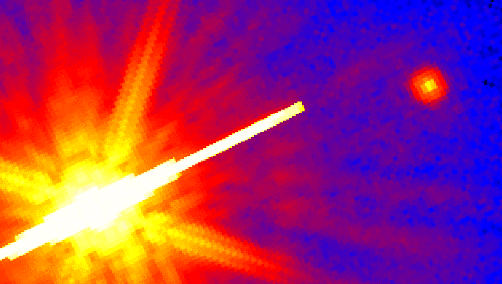Astronomy Picture of the Day
Discover the cosmos! Each day a different image or photograph of our fascinating universe is featured, along with a brief explanation written by a professional astronomer.
September 20, 1995

GL 105C: The Coolest Star?
Credit:
NASA,
HST, WFPC 2, D. Golimowski
(JHU)